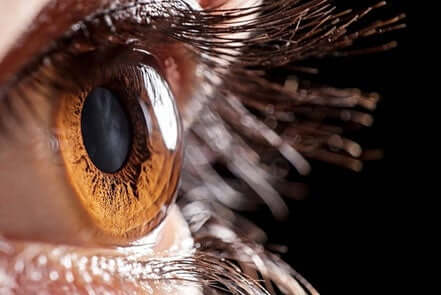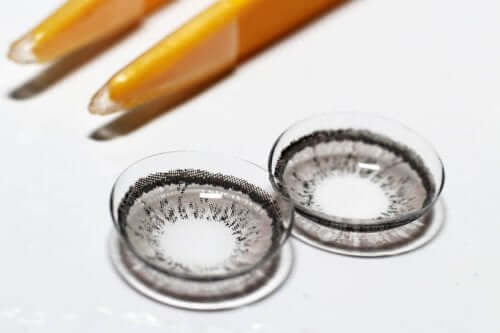Care after a Corneal Transplant

A corneal transplant, also known as corneal grafting, is a surgical intervention in which a medical professional replaces a damaged or diseased cornea with the cornea of a donor.
The main purpose of a corneal transplant is to improve the patient’s visual acuity. Moreover, this procedure is able to restore the morphology of the cornea and remove inflamed tissue that doesn’t respond to medical treatment.
Corneal transplant is the only treatment for people who have a severely affected cornea. However, patients should only undergo this operation when the inside of the eye, meaning the retina and optic nerve, still work properly. Some of the conditions that could damage the cornea are:
- Glaucoma
- Optic nerve diseases
- Retinal detachment
- Inflammation inside the eyeball
- Serious infection inside the eyeball
Before describing the steps of this surgery and the required care, you must fully understand the affected eye structure: the cornea.
What is the cornea?

The eye contains a series of complex structures. These include the cornea. This eye structure allows the passage of light from outside to the inside of the eye. Its function protects the iris and the lens (two other eye structures).
The cornea has refractive properties, a transparent structure, and a characteristic curvature that allows it to perform its functions:
- Protecting the eye – it shares this function with the eyelid, eye socket, tears, and sclera
- Controlling the focus and entry of light into the eye
You should also read: How to Detect Vision Problems in Young Children
Types of corneal transplant
There are two main types of corneal transplant:
- Traditional full thickness corneal transplant (also known as penetrating keratoplasty)
- Back layer cornea transplant (also known as endothelial keratoplasty)
The latter is becoming more popular lately, as doctors are preferring it over a traditional full thickness transplant. Below, we’ll discuss them in more detail.
1. Traditional full thickness corneal transplant
This is the only alternative in cases where all the layers of the cornea are affected. It presents a great disadvantage, which is the fact that the transplanted endothelium is the main stimulus for rejection.
Care after a traditional full thickness corneal transplant
This intervention has a rather slow recovery period. In fact, it can last up to 12 months. However, most people begin to notice an improvement in the first days after surgery.
Over the first year, the doctor will remove the sutures. The final result of the vision won’t be known until the doctor removes all the sutures. The patient must make a minimum of 10 post-surgery visits.
Furthermore, approximately 15% of patients will need to use contact lenses. Meanwhile, 10% of them will require the correction of residual astigmatism.
This article may interest you: 8 Symptoms of Cataracts and How to Treat Them Naturally
2. Back layer cornea transplant

Within this process, you can find two types of surgeries:
- Anterior. Used for corneal diseases that don’t affect the endothelium. Some examples are keratoconus and corneal scarring. These diseases affect the cornea but don’t affect the endothelium.
- Endothelial transplantation. In this case, the damaged part of the cornea is replaced by healthy corneal donor tissue. To perform it, the doctor uses a much smaller incision which doesn’t require sutures.
Other recommendations
Here are some other tips that you should apply to make sure your recovery process is more effective:
- Don’t touch nor rub the eye
- Don’t drive, operate machinery, drink alcohol, or make any major decisions for at least 24 hours after the surgery
- You should limit activities that may cause a drop or an increase in eye pressure – for example, avoid activities that require physical contact
- Stay away from dust and dirt
- Carefully follow the treatment your doctor indicated
- Go to all post-surgery checkups
All cited sources were thoroughly reviewed by our team to ensure their quality, reliability, currency, and validity. The bibliography of this article was considered reliable and of academic or scientific accuracy.
- Adrián, J., & Dosal, R. (2000). Trasplante de córnea. Hosp Jua Mex. https://doi.org/10.4321/S1137-66272006000400015
- Garralda, A., Epelde, A., Iturralde, O., Compains, E., Maison, C., Altarriba, M., … Maraví-Poma, E. (2006). Trasplante de córnea Cornea transplant. An. Sist. Sanit. Navar. https://doi.org/10.5001/omj.2012.42
- Fernández, A., Moreno, J., Prósper, F., García, M., & Echeveste, J. (2008). Regeneración de la superficie ocular: Stem cells/células madre y técnicas reconstructivas. Anales Del Sistema Sanitario de Navarra. https://doi.org/10.4321/S1137-66272008000100005
This text is provided for informational purposes only and does not replace consultation with a professional. If in doubt, consult your specialist.








